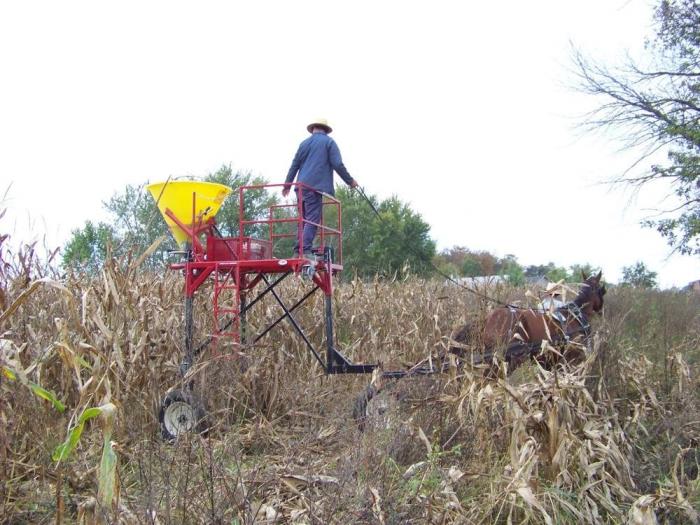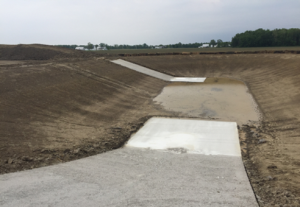Indiana Farmers are Going Beyond the Dollar
More Amish have adopted no-till and soil health practices among others in recent years, but, as a non-traditional customer, it can still be difficult for staff and partners to reach out to local Amish communities through typical avenues.
Indiana has the third largest Amish population in the nation, with communities spread throughout the state. Amish farms continue to use more traditional methods, such as horse-drawn equipment including plows. Resource concerns remain the same as more conventional farms, but the Amish community’s reluctance to participate in government programs means they are not typically seeking NRCS assistance to address these concerns.
This has changed in recent years, as more Amish adopt no-till and soil health practices among others. But, as a non-traditional customer, it can still be difficult for staff and partners to reach out to local Amish communities through typical avenues.

Amish farmers value technical assistance. While they may not be willing to take a government payment to help install a practice, they are very open to learning about conservation practices and receiving information on how to implement them.
In Indiana, we have had success in providing technical assistance at targeted field days and pasture walks on Amish farms and through one-on-one assistance. Because of the dense population of Amish within the GLRI watershed, Adams County Soil and Water Conservation District (SWCD) hired an outreach specialist to build relationships and work directly with the Amish community within the Western Lake Erie basin. The Great Lakes Restoration Initiative Conservation Technical Assistance dollars helped pay for this assistance.
“Amish are open and receptive to technical assistance once we have made a connection and have developed a relationship,” said Darrell Brown, Amish Outreach Specialist.
As conservation technical assistance providers, NRCS and Adams County SWCD are able to offer Amish farmers many services such as: providing soil maps and aerial photos of Amish land; assisting with soil and manure samples; and providing important conservation information to address resource concerns.
“Most of the Amish farmers we have worked with have either never tested their soil or it has been many years since they sampled. Fewer have manure tested,” said Brown.
Because of this, the conservation partnership staff works hard to help make the connection between what the soil tests show about nutrient levels in fields and the nutrient levels of the manure applied. They stress the economic value of the manure applied and the economic cost of spreading manure when soil tests show it is not needed. In addition, they discuss the environmental issues related to over applying phosphorus.

And while the Amish don’t typically participate in cost-share programs, they have participated in programs where the SWCD has secured discounted rates for soil and manure tests or discounted seed for cover crops.
Recently, the Adams County SWCD purchased a no-till drill and highboy seeder that is loaned out for use by the Amish communities. This provides opportunity for interaction, technical assistance and building strong relationships.
To keep the conservation going, the SWCD created, printed and distributed a watershed booklet that explains what a watershed is, how and why to test soil and manure, tools to manage nutrients, and the issues with E coli and pesticides. A second publication highlights manure management, including information on soil testing, water quality, nutrient removal, soil test results, and manure application restrictions.
NRCS and the Adams County SWCD are committed to continuing to find new, innovative methods to reach the Indiana Amish communities and provide technical assistance for their natural resource concerns.
Additional Information
Great Lakes Restoration Initiative
NRCS, through the GLRI, targets watersheds that are expected to have the greatest impacts on improving water quality. GLRI funds are targeted to these priority watersheds to implement avoiding, controlling and trapping practices that reduce the amount of nutrient loss from agricultural lands.
Historically Underserved Producers
Historically Underserved producers may be eligible for the advance payment option as well as targeted funding pools and priority consideration when applying for assistance.
INDIANA NRCS HOMEPAGE
For more information about NRCS programs offered in Indiana and how experts throughout the state can help you address natural resource concerns on your land, visit the Indiana NRCS homepage.

